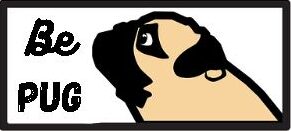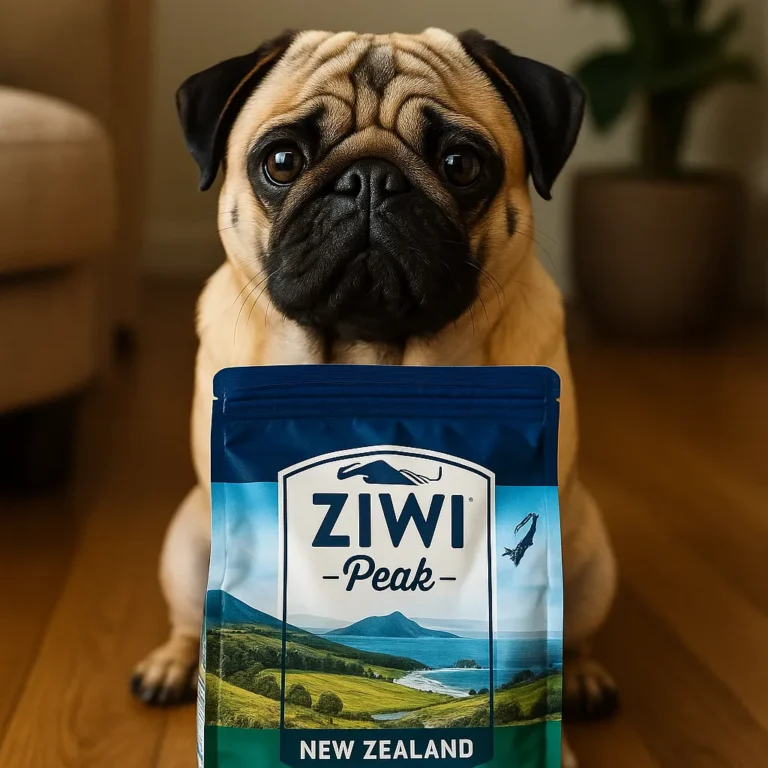How to Clean Pugs’ Ears – Simple Steps for Healthy Ear Care

Disclosure: This post contains affiliate links. As an Amazon Associate, I earn from qualifying purchases—at no extra cost to you.
Last Updated: December 2025
Pugs have soft, folded ears that trap warmth and moisture, so they need a bit more ear care than other breeds. The good news is that ear cleaning is quick once you learn the steps, and it goes a long way toward preventing itchiness, odor, and discomfort.
👉 If you’re setting up an easy weekly routine for your pug, this helpful pug care overview explains how ear care fits in and keeps your dog’s skin and coat healthier.
🔍 Why Pug Ears Need Regular Cleaning
Because airflow inside a pug’s ears is limited, wax and moisture build up more quickly. Even pugs with perfectly healthy ears can develop mild odor or debris if you skip checks for too long.
A simple cleaning routine helps prevent irritation, yeast buildup, and the early start of infections. Most of the time you’re just removing light wax—nothing complicated.
🔍 How Often Should You Clean Your Pug’s Ears?
Most pugs do well with cleaning every 1–2 weeks. Some may need more frequent care if they swim often, struggle with allergies, or naturally produce more wax.
Cleaning too often can dry out the skin, so adjust the schedule to what your pug needs.
🔍 What You Need Before Cleaning
You only need a few gentle, dog-safe supplies:
- Ear-cleaning solution made for pets
- Soft cotton pads or gauze
- A towel for small drips
- Treats to keep things positive
- Good lighting so you can see clearly
Avoid cotton swabs—they push debris deeper and can irritate the canal.
🔍 Step-by-Step Guide: How to Clean a Pug’s Ears
1. Check each ear first
Lift the flap and look for redness, thick discharge, or strong odor. Light wax is normal; anything more may need a vet’s attention.
2. Add a few drops of cleaner
Use a dog-safe solution. Let it settle so it loosens debris inside the ear.
3. Massage the base of the ear
A slow, gentle massage helps break up wax. You might hear a soft squish—this is normal.
4. Wipe only what you can see
Use a cotton pad to clean the folds and outer opening. Never reach inside the ear canal.
5. Let your pug shake their head
This helps remove extra solution and loosened wax.
6. Give a treat and repeat
Positive reinforcement makes future cleanings easier.
🔍 Signs Your Pug Might Have an Ear Infection
Some symptoms go beyond routine wax:
- Persistent scratching
- Thick or smelly discharge
- Red or swollen ear tissue
- Sensitivity to touch
- Frequent head shaking
- Rubbing their ears on furniture
If these symptoms appear, a quick vet visit is the safest option.
🔍 Tips for Easier Ear Care
A few simple habits make the routine smoother:
- Clean after baths or rainy walks to manage moisture
- Use treats through the process
- Keep your voice calm and steady
- Pair ear cleaning with brushing so it feels predictable
If you’re updating your grooming kit, this guide to pug-friendly brushes can help you choose gentle tools that fit well with ear care.
📌 Key Takeaways
- Most pugs need ear cleaning every 1–2 weeks
- Never insert cotton swabs into the ear canal
- Redness, odor, or thick discharge may signal infection
- A gentle massage helps break up wax safely
- Early signs of discomfort should be checked by a vet
🟢 FAQs
Q: Are pugs more prone to ear infections?
Yes. Their folded ears trap heat and moisture more easily.
Q: Can I use human ear products on my pug?
No—always stick to dog-safe solutions.
Q: What if my pug dislikes ear cleaning?
Go slowly, give treats, and clean one ear at a time if needed.
Q: How do I know when the ear is clean enough?
It should look free of visible debris and have no noticeable odor.
✅ Conclusion
Regular ear cleaning keeps your pug comfortable and helps prevent common issues like itching, odor, and yeast buildup. With gentle products and a calm routine, ear care takes only a few minutes and quickly becomes part of normal grooming. Paying attention to early signs of irritation helps keep their ears healthy year-round.






